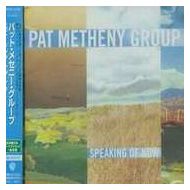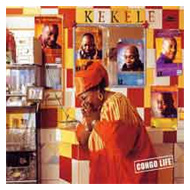|
Revealing the organic truth in music. Hand crafted in the U.S.A. Fine artisan-built analog, digital, loudspeaker, power, and video cables featuring ultra-pure Cryo-Silver™ deep cryogenic treated 99.999% solid silver conductors, Big Air™ dielectrics, and Ceramic Micro-Sphere Conduit™.
|
You are reading the older HTML site
Positive Feedback
ISSUE
26
sound fusion
Nova SF-80 loudspeakers
as reviewed by Victor Chavira

|
VICTOR CHAVIRA'S SYSTEM
LOUDSPEAKERS
ELECTRONICS
SOURCES
CABLES
ACCESSORIES |
Nova - a star that explodes producing a light 100,000 times brighter than the sun
You may have noticed glossy advertisements featuring unusual-looking loudspeakers by Sound Fusion, a new speaker company based near Toronto. Sound Fusion's basic speaker is the two-way stand-mount Luna. The Nova is a Luna atop a bass tower. The Ariel is a powered Luna, and the Hyperion is a powered Nova. Sound Fusion is a branch of a large furniture corporation, and the construction quality of their speakers reflects the company's experience with fine cabinetry. I received a review pair of Novas finished in beautifully patterned birdseye maple.
The organic shape of the Nova (right angles are nowhere to be found) is designed to reduce internal standing waves and edge diffraction, both of which blur transients. The beveled front and back baffles are shaped out of 3-centimeter-thick furniture-grade birch ply. They are attached to the cabinet with gaskets to provide further isolation from vibration. Finally, the drivers are fixed to a carved flange and another gasket before being fitted to the baffle. As a result, the drivers do not come into direct contact with the cabinet. The top cabinet is joined to the bass module, but is isolated by a 15-millimeter-thick slab of birch ply and gaskets. Knocking on the sides of the upper cabinet with my knuckles made a muted thud, while the bass tower produced a more resonant sound.

Optimal placement of the Novas was made difficult by the fact that two people are needed to move these 115-pound, top-heavy towers. I suggest using a dolly or hand truck to maneuver the speakers into their final positions. Then screw in the threaded brass spikes and slide the four compliant pucks underneath each spike. This puts the tweeters 47 inches from the floor, nearly 10 inches higher than the tweeters of my Marten Miles IIs. At first I thought that this would affect my listening position, but the wide dispersion patterns of the ribbon tweeters' meant that the speakers let me remain in my favorite spot on the couch.
 Ribbon tweeters are like a new Pat Metheny CD. I do not need to hear either to
know I'm going to like them. The Novas' highs extend to 60kHz, and their upper
octaves sound remarkably clear, extended, and detailed. Listening to the Pat Metheny Group's 2002 CD, Speaking of Now, I was impressed by the detailed
sound of Antonio Sanchez' drum kit. At times, his superb stick work on the ride
cymbal sounded like fine grains of sand. His strikes on a cowbell, with their
initial burst of energy and quick decay, were holographically projected between
the speakers. Layers of guitar were rendered with individuality and coherence.
Ribbon tweeters are like a new Pat Metheny CD. I do not need to hear either to
know I'm going to like them. The Novas' highs extend to 60kHz, and their upper
octaves sound remarkably clear, extended, and detailed. Listening to the Pat Metheny Group's 2002 CD, Speaking of Now, I was impressed by the detailed
sound of Antonio Sanchez' drum kit. At times, his superb stick work on the ride
cymbal sounded like fine grains of sand. His strikes on a cowbell, with their
initial burst of energy and quick decay, were holographically projected between
the speakers. Layers of guitar were rendered with individuality and coherence.
The Novas' ability to sift out the fine detail from recordings was one of their strongest assets. Vivaldi's Concerto in G for Two Mandolins by the Parley of Instruments (Hyperion 66160) was a revelation. In this music, the tweeters handle a great deal of information. Many speakers in this class can create a realistic-sounding illusion of a chamber orchestra, but the Sound Fusion Novas go to the next level by clearly distinguishing each mandolin and its musical lines. Even when the mandolins played the same notes at the same time, their images were uniquely rendered in space. The small orchestra was given light and space, resulting in a very pleasing musical experience.
Canada's own Neil Young illustrated the Novas' exceptional midrange performance on his recent DVD, Heart of Gold. At one point in the concert, Young is joined by six other acoustic guitar players, an autoharp, and a violin section. With many loudspeakers, this many instruments occupying the same frequency range would be a recipe for sonic mush, but the Novas had no trouble. Each instrument was coherently projected within a voluminous soundstage. Young's unique voice has aged, but he can still reach high on tender ballads like Fallin' Off the Face of the Earth.
 Another recording that showcased the Novas was Congo Life by Kekele, a
Congolese vocal quintet backed by guitar, accordion, and percussion. Kekele's
music is uncannily similar to Cuban son. I cannot understand their Congolese and
French lyrics, but this is some of the most infectiously joyful music I have
ever heard. The songs feature different solo instruments, including clarinets,
alto sax, flute, and violin, and the Novas displayed all of them with excellent
momentum and timing. Percussion instruments were vividly portrayed, with
exceptional speed and coherence. The saxophone's mixture of reed, air, and brass
was displayed with great accuracy, and Vincent Hamandjian's melodic, vibrant
bass lines urged the music along.
Another recording that showcased the Novas was Congo Life by Kekele, a
Congolese vocal quintet backed by guitar, accordion, and percussion. Kekele's
music is uncannily similar to Cuban son. I cannot understand their Congolese and
French lyrics, but this is some of the most infectiously joyful music I have
ever heard. The songs feature different solo instruments, including clarinets,
alto sax, flute, and violin, and the Novas displayed all of them with excellent
momentum and timing. Percussion instruments were vividly portrayed, with
exceptional speed and coherence. The saxophone's mixture of reed, air, and brass
was displayed with great accuracy, and Vincent Hamandjian's melodic, vibrant
bass lines urged the music along.
Although the Novas' midbass performance was well defined and dynamic, the low bass asserted itself only when the speakers were played at louder-than-normal levels. The speakers were as close to the rear wall as my furniture arrangement would allow—about 24 inches—but I think they would have benefited from even closer placement to reinforce the output from the front ports. While I enjoyed listening to Israel "Cachao" Lopez' Master Sessions, Vol. 2, Cachao's venerable bass viol lacked weight and depth. The speakers emphasized the agility of his fingers and the timbre of the strings over the warm overtones and bulky body of the instrument.
The Novas' lean-ish low bass was also apparent with rock music, like Rush's 1980 LP, Permanent Waves. Even though Geedy Lee is one of rock's most gifted bassists, his playing usually covers the mid and upper bass frequencies, leaving the lows to Neil Peart's massive drum set and synthesizer pedal tones. The Sound Fusion Novas recreated the music with explosive dynamics and fine resolution, with nary a hint of compression or distortion at loud volumes, but at normal listening levels, their low-end grip and subterranean pulse diminished.
Compared to my Marten Miles IIs, the Sound Fusion Novas are more revealing and extended in the top octave—so revealing that some of your favorite music may sound less satisfactory because surface noise, jitter, studio compression, and a host of other byproducts of the recording process will no longer be obscured. The Miles IIs' twin-rear-port design produces more low bass authority. Both speakers are richly detailed and uncolored in the midrange—an absolute requirement in this price range. Musically speaking, the Novas are Alanis Morissette to the Martens' Sarah McLaughlin. One speaker is lucent and energetic while the other is sultry and sensual. The policy at Positive Feedback is to evaluate products using associated components that are part of the reviewer's stable system, but I regret not having a tube amp on hand to further explore the sonic possibilities of the Novas. The Sound Fusion Novas are a bold entry into the world of high-resolution audio. They will appeal to listeners who value fine detail, tremendous transient speed, and responsive dynamics. Victor Chavira
SPECIFICATIONS
-
Frequency Response: 30 Hz - 60 kHz
-
Impedance: 4 ohms
-
Sensitivity: 90 db/2.83 V/2m
-
Power Requirements: 25 watts - 300 watts
-
Dimensions: 48" H x 15" W x 18" D
-
Weight: 110 lbs
-
Standard Finish: Walnut, Macore
Nova
Retail: $10,000 a pair (US)
Sound Fusion
web address: www.soundfusion.ca

